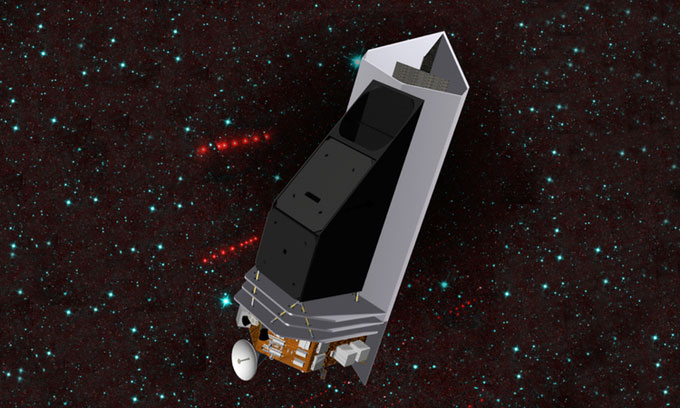NASA builds asteroid-hunting space telescope
The new space telescope, scheduled to launch in 2026, will help protect the Earth from potentially dangerous objects.
NASA's Jet Propulsion Laboratory (JPL) announced on June 12 that the agency has approved a plan to build a new infrared space telescope to enhance Earth's protection.

Illustration of the NEO Surveyor space telescope. (Photo: NASA/JPL-Caltech).
The new vehicle, called the NEO Surveyor space telescope , is tasked with detecting and classifying near-Earth objects (NEOs), such as potentially hazardous asteroids. Insurance 2021 KT1. 2021 KT1 is about the same size as the Space Needle in Seattle, USA. In early June, this asteroid passed 7.2 million km from Earth at a speed of about 64,400 km / h.
According to NASA, NEO is an asteroid or comet coming 195 million km from the Sun or 48 million km from Earth in the next few hundred years. NASA is on a mission to detect 90% of NEOs larger than 140 m and has found about 40% to date. In 2010, NASA accomplished its goal of detecting 90% of NEOs larger than 1,000 m in size.
"Every night, astronomers around the world diligently use ground-based optical telescopes to find new NEOs, classify their shapes and sizes, and confirm that they are not threat to humans , " said Kelly Fast, manager of NASA's NEO Observation Program.
"These telescopes can only search for NEOs in the night sky. Meanwhile, the NEO Surveyor will allow scientists to observe day and night, focusing on areas where dangerous NEOs can be detected. and accelerate the completion of the goal" , Fast added.
Detecting, characterizing and tracking potentially hazardous NEOs is vital to the safety of the green planet, helping experts take action to deflect or mitigate the consequences before they happen. strong collision.
NASA has provided clear information on some NEOs, but the influence of undiscovered NEOs remains a threat. From a position closer to the Sun, the NEO Surveyor will use infrared sensors to locate NEOs that fly past Earth during the day - something current ground-based optical telescopes cannot do.
The NEO Surveyor is scheduled to launch into space in the first half of 2026. Meanwhile, NASA also plans to launch the Double Asteroid Redirection Test (DART) to test the deflection technology later this year.
- NASA builds the world's most powerful telescope
- NASA's 'powerful arm' alien hunting disappeared mysteriously
- NASA planetarium expert broken
- NASA called for a contribution to the Asteroid Redirect Mission program
- NASA announces new discovery from spacecraft to hunt for life
- Asteroid hunter wakes up
- Kepler Space Telescope
- NASA completed the telescope looking back past 13 billion years
- Asteroid diameter of 500m spew rocks into space
- NASA announced the details of the plan to
- NASA has postponed the world's most powerful space telescope
- NASA launches a telescope to repair the telescope
 Norway built the world's tallest wooden tower
Norway built the world's tallest wooden tower Kremlin
Kremlin Ashurbanipal: The oldest royal library in the world
Ashurbanipal: The oldest royal library in the world Decoding the thousand-year construction of Qin Shihuang shocked the world
Decoding the thousand-year construction of Qin Shihuang shocked the world